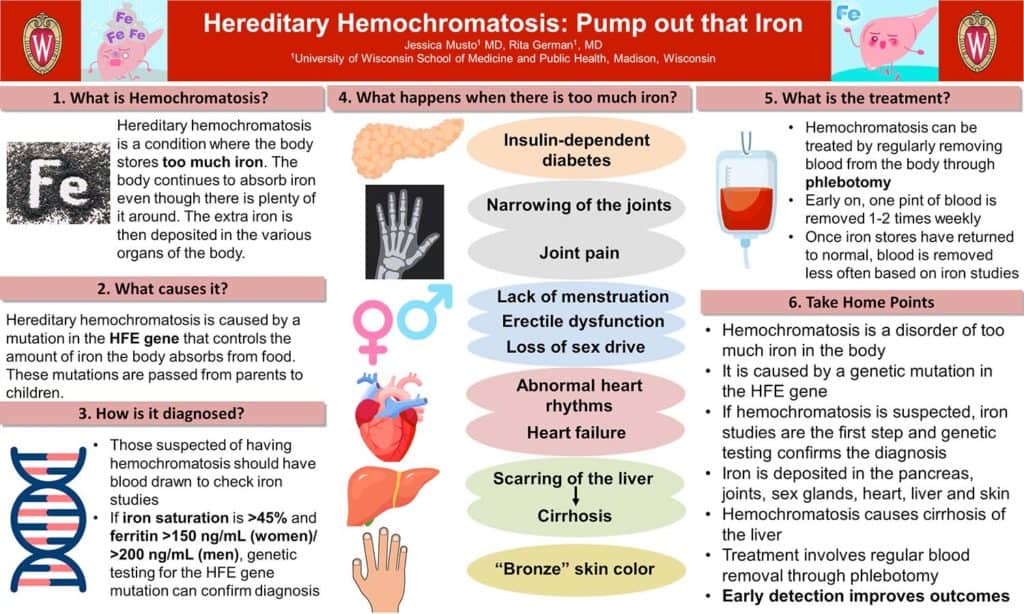Hereditary Hemochromatosis: Pump Out That Iron
Jessica Musto, MD and Rita German, MD
University of Wisconsin School of Medicine and Public Health
This presentation is an excerpt from the ALF 2021 Poster Competition. This competition showcases posters and a brief video created by early career investigators from across the country on six areas of educational focus: fatty liver disease, liver cancer, liver transplantation, pediatric liver disease, rare liver disease and viral hepatitis. Participants are tasked with translating complicated medical information into a poster which can be easily understood by patients or the public. Posters are reviewed by a formal panel of judges comprised of Medical Advisory Council members, Board Members and friends of ALF to select a winner in each category.

Hereditary hemochromatosis is a genetic disorder caused by a mutation in the HFE gene. The HFE gene mutation causes the body to absorb an excessive amount of iron from food. The excess iron is then deposited in various organs of the body including the pancreas, pituitary gland, heart, liver, joints and skin. In the liver, iron causes an inflammatory response which leads to scarring of the liver (fibrosis) and ultimately cirrhosis and liver failure. The first step in the diagnosis of hereditary hemochromatosis is iron studies. If the percent iron saturation is >45% and ferritin >150 ng/mL in females and >200 ng/mL in males, genetic testing for HFE gene mutations can confirm the diagnosis of hereditary hemochromatosis. Treatment for hereditary hemochromatosis involves regular blood removal via phlebotomy.
Last updated on December 1st, 2022 at 02:02 pm